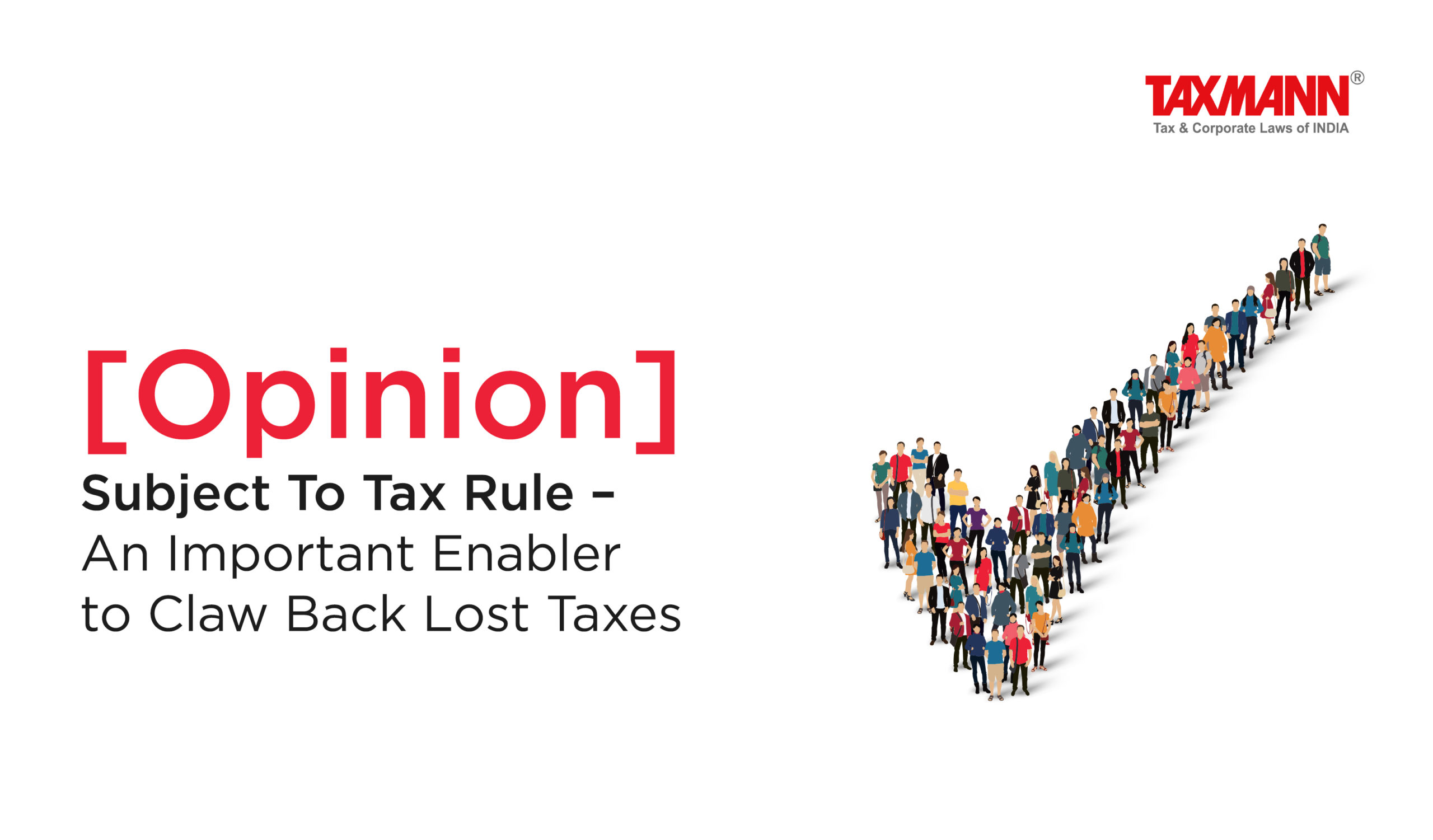[Opinion] Subject To Tax Rule – An Important Enabler to Claw Back Lost Taxes
- Blog|News|International Tax|
- 2 Min Read
- By Taxmann
- |
- Last Updated on 9 August, 2023
CA Pradeep Narayanan – [2023] 153 taxmann.com 196 (Article)
1. Introduction
While different and more complex business models have evolved over the last two decades with enterprises being able to generate revenues in a jurisdiction through digital transformation without a physical presence, the tax laws have hardly kept pace with the same. To address the challenges concerning digitalisation of the economy, 135 jurisdictions (representing around 95 percent of the Global GDP) joined the Two-Pillar solution in order to agree on a framework of international tax system that is harmonised with the way enterprises operate in a globalised cum digital environment.
The Subject To Tax Rule (STTR), which is an integral part and a key element of the consensus solution on Pillar 2 aligns with the fundamental principle of taxing profits by jurisdictions where the economic activities are carried out and where value is created. STTR is a treaty-based rule that provides further rights to the source State for taxing certain intra group payments.
2. Concept and design of STTR
STTR offers the source State an ability to claw back taxes which it has ceded on certain intra group outbound payments, if such income is taxable at lower than the minimum rate (9 percent) in the State of residence. The intention is not to reallocate taxing rights under tax treaties but enable the source State levy an additional tax on specific payments such that the overall tax levied in the State of residence and State of source on such payments is not below 9 percent.
Given that the objective of the Two-Pillar solution is to align the taxing rights to States where the economic activities are carried out, STTR enables countries, particularly from the developing world to protect and increase their tax base. STTR targets intra group cross border payments, as the same is typically susceptible to devices which may artificially shift profits from the source State to countries with lower tax rates.
From a design standpoint, STTR is proposed to be a bilateral tax treaty article thereby facilitating easier interaction with other articles in the tax treaty, which is needed while evaluating the specified rate. Another mechanism through which STTR can be implemented in a speedy manner could be through a Multilateral Instrument (MLI).
Click Here To Read The Full Article
Disclaimer: The content/information published on the website is only for general information of the user and shall not be construed as legal advice. While the Taxmann has exercised reasonable efforts to ensure the veracity of information/content published, Taxmann shall be under no liability in any manner whatsoever for incorrect information, if any.

Taxmann Publications has a dedicated in-house Research & Editorial Team. This team consists of a team of Chartered Accountants, Company Secretaries, and Lawyers. This team works under the guidance and supervision of editor-in-chief Mr Rakesh Bhargava.
The Research and Editorial Team is responsible for developing reliable and accurate content for the readers. The team follows the six-sigma approach to achieve the benchmark of zero error in its publications and research platforms. The team ensures that the following publication guidelines are thoroughly followed while developing the content:
- The statutory material is obtained only from the authorized and reliable sources
- All the latest developments in the judicial and legislative fields are covered
- Prepare the analytical write-ups on current, controversial, and important issues to help the readers to understand the concept and its implications
- Every content published by Taxmann is complete, accurate and lucid
- All evidence-based statements are supported with proper reference to Section, Circular No., Notification No. or citations
- The golden rules of grammar, style and consistency are thoroughly followed
- Font and size that’s easy to read and remain consistent across all imprint and digital publications are applied








 CA | CS | CMA
CA | CS | CMA


